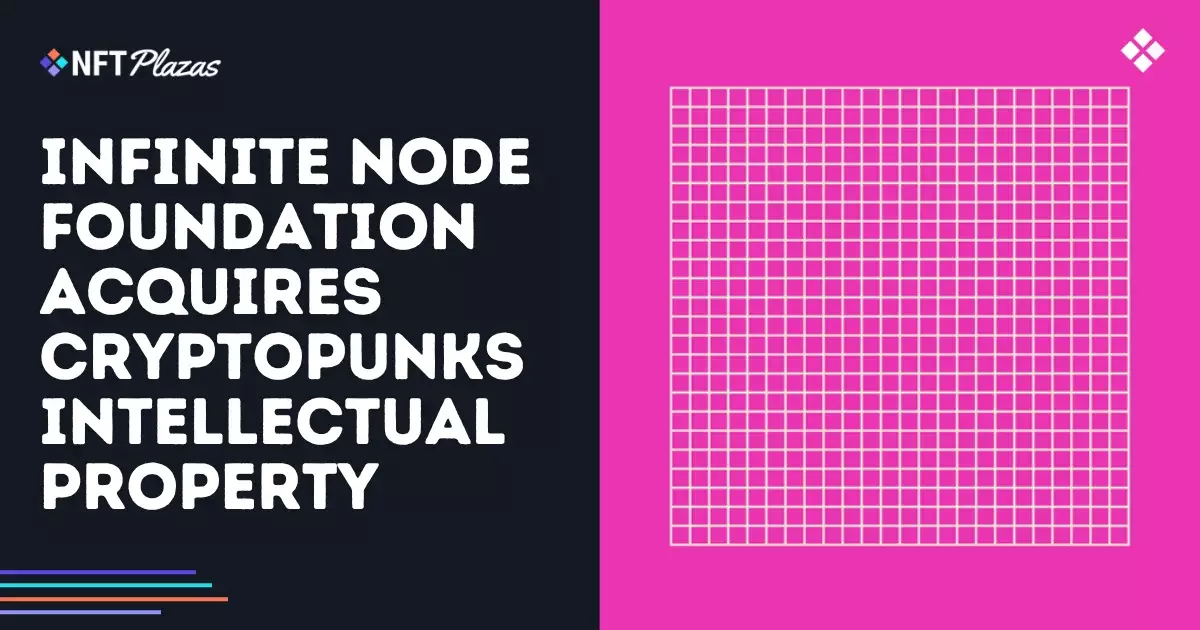In a seismic shift that has sent ripples across the global NFT landscape, the Infinite Node Foundation (NODE) has acquired the intellectual property rights to the illustrious CryptoPunks collection. This move marks the transition of one of the most iconic digital assets from private ownership, controlled by profit-driven entities, into the hands of a nonprofit organization. While the idea of preserving such a cultural touchstone is commendable, it raises significant concerns regarding the future of digital art and collectibles. The change from commercial governance to nonprofit management may be seen as a noble cause, but it is imperative to scrutinize the potential fallout of such a drastic transition.
The Illusion of Preservation
NODE’s commitment to preserve and study digital artworks, particularly those created on blockchain technology, is paramount in a rapidly evolving digital world. However, one cannot help but wonder whether nonprofit governance can genuinely provide the same level of innovation and dynamism that the original creators offered. Nonprofits often face bureaucratic hurdles that can stifle creativity and impede quick decision-making. Micky Malka, the Chair of the NODE Foundation, envisions “museum-grade conservation” coupled with an “evergreen endowment,” but what is often underestimated is the red tape that can come with nonprofit structures. In theory, seeking to preserve CryptoPunks as works of art is laudable, but this vision may very well become mired in the operational sluggishness common to many nonprofit organizations.
Community Engagement or Control?
NODE has pledged to maintain the original spirit of CryptoPunks while aiming to promote community engagement and technological preservation. Still, one must ask: who truly defines that spirit? When the management changes hands, can the original ethos remain intact, or will it be reframed to suit the agendas of a new board? The advisory board comprises notable figures from established projects; however, will they reflect the voices of existing punks holders, or merely serve to create a new ‘top-down’ structure? The vibrant grassroots community that formed around CryptoPunks flourished under decentralized governance, where each member’s voice mattered. As a nonprofit, will NODE prioritize community voices, or will they inadvertently reinforce elitism behind the facade of collective stewardship?
The Rise of Technocratic Governance
With NODE’s plan to operate a full Ethereum node and serve as a technical hub, there’s a looming risk of prioritizing technological preservation over core artistic values. First and foremost, it raises questions about what it means to be a ‘curator’ in a digital space. Traditionally, curators have had a significant narrative role in shaping how art is understood and appreciated. However, does pumping funds into technology equate to enhancing the cultural context of pieces like CryptoPunks? The very essence of NFT culture lies in the narratives created around them, and turning to cold technical governance risks homogenizing a deeply nuanced art form.
Lost in Commercialization vs. Preservation
With NODE’s emphasis on an “evergreen endowment,” it positions itself as a guardian of culture, but is there a risk that this financial model will skew its motives in the long run? The former custodians at Yuga Labs, and the initial creators of CryptoPunks, had commercial aspirations that fueled innovation and inspired a movement. In contrast, can a nonprofit structure thrive under a model that inherently lacks the profit motive? There’s a fine line between preserving art and stifling it by enforcing a rigid system that lacks the passion and entrepreneurial spirit intrinsic to NFT culture.
As NODE ascends to the role of chief steward of CryptoPunks, the balance of cultural responsibility and financial viability becomes increasingly tenuous. While society yearns for NFT projects that prioritize public interest over profit, it remains uncertain whether transitioning to a nonprofit model will succeed in preserving the lively, ever-changing essence of CryptoPunks. In a world that values progress, it is the innovators who drive conversations, not the gatekeepers who preserve. The shift may symbolize the end of an era – not merely for the CryptoPunks but potentially for the digital art landscape as a whole.


Leave a Reply